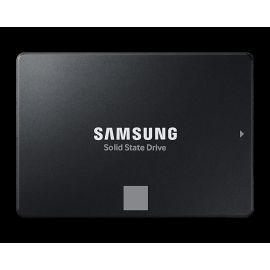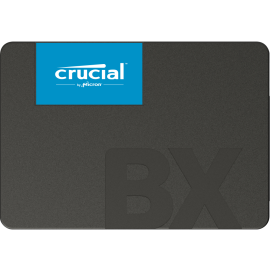-
Samsung Internal SSD 2TB 870 EVO 2.5" MZ-77E2T0BW-2TB
Special Price OMR 66.25 was OMR 73.03 -
ASUS ROG STRIX SSD-S1F10 M.2 GEN4 1TB NVME
Special Price OMR 68.79 was OMR 76.21
Get the most out of your System by using high speed and reliable data storage products such as SSDs, HDDs, NVME drives, external storage and much more.
The ability to store data is now one of the most important ingredients in any contemporary computing system, and it directly affects the speed of the systems, responsiveness, access of information stored on the systems, and performance of the systems. When you are constructing a new PC or upgrading an existing system, or even handling enterprise-level storage, data storage devices are the critical items to make sure you have enough capacity, speed, and reliability. There is an abundant selection in the data storage market with solid-state drives (SSD), hard disk drive (HDD), NVMe M.2, external hard drive, portable SSD, and network-attached storage (NAS) products as they allow flexibility in various applications.
Solid-state flash-based drives (SSDs) have transformed data storage to the extent that their read and write speed is much faster as compared to age-old mechanical hard drives. The SSD stores data on flash memory, which eliminates longer boot, transferring, and loading applications. Such SATA SSDs provide significant benefits over the HDDs, with speeds generally topping out at 600 MB/s and the NVMe SSDs exploit the available PCIe lanes to provide extremely fast processing capacities exceeding 3500 MB/s or more, useful in gaming, video editing, and other professional activities that require quick access to data.
Hard disk drives (HDD) are still implemented because they are cost effective on their high capacity. HDDs refer to rotating magnetic platters and read/write heads to store data and are being best suited to bulk storage facilities, back-ups and archiving. Currently offered in 500 GB, to over 18 TB, and now greater sizes, HDDs have their uses that include larger media libraries, large collection of data, and backups where speed is not a major factor.
NVMe M.2 drives are now the enthusiast and professional choice of those wanting the very best in storage performance. such drives simply plug into the motherboard directly, into the M.2 connector, and use the NVMe protocol atop PCIe, thus being able to achieve very low latency and high data transfer rates. Enterprise-grade NVMe drives also add such capabilities as thermal throttling protection, high-order error correction and dynamic SLC caching to ensure maximum performance under heavy workloads.
Portable and external alternative storage solutions deliver a portable and extendable storage device to those users who need to move between systems huge files, or to supply capacity without an internal installation. Portable SSDs and external HDDs can be connected using USB 3.0, USB-C, and Thunderbolt; they are convenient with a fast transfer speed and a plug-and-play feature. Portable SSDs deliver speed and durability, which make them ideal to be reported on by the portable-type professionals and gamers and content creators on the move.
Network-attached storage (NAS) systems are household and business storage units that allow multiple users access to shared files, streaming media, and data backup over local areas, or via the internet. The NAS units have diverse capacity and feature sets, including support of RAID modes of redundancy and data protection, and remote access abilities to make them more flexible.
The storage capacity requirements are very wide depending on the needs of the user. The average user who browses the Web and works on docs and media streaming may not consider 256 GB to 512 GB SSDs to be sufficient to achieve speedy system performance. Players and creative individuals take advantage of 1 TB or 2 TB SSDs or even the combination of SSDs (as the operating system and application storage) with HDDs (as the mass storage). Users of enterprises and workstations that work with large media files, databases or virtual machines frequently need multiple terabytes or RAID arrays to achieve a proper balance between speed, size and data protection.
Reliability and durability are the main aspects during selection of data storage devices. Having no moving parts usually makes SSDs more shockproof, and less likely to fail than HDDs. There are also feature manufacturers giving warranties of up to five years or more; this can only mean that the manufacturer is assured of the product life. NVMe SSDs usually have additional support such as thermal sensors and optimizations in the firmware to overcome overheating and support a consistent performance.
Overall performance and compatibility is determined by data transfer interfaces. SATA is still popular on most SSDs and HDDs because of shared compatibility, whereas PCIe Gen3 and Gen4 lanes are used on the newer motherboards with NVMe drives. USB 3.1 Gen2, USB-C, and Thunderbolt 3/4 interfaces support fast links to external storage devices, including backward capability in older standards.
Strong stuff in data storage devices has been seen in the form of hardware encryption, support of TRIM in SSD longevity, health monitoring through SMART and use of advanced error correction codes (ECC) to minimize data corruption issues. Most NVMe SSDs can be used with the newest PCIe 4.0 or PCIe 5.0 standards, which will allow accelerated performance and bandwidth required in image editing workloads (4K/8K), as well as in gaming and big data analysis operations.
Speed, capacity, durability, and budget are the factors that have to be balanced when selecting an appropriate data storage solution. SSDs have a higher performance in applications where performance matters a lot such as providing a faster loading time and an overall improved response time. HDDs are cost effective storage of back up and archives. The hybrid storage environments that include SSDs and HDDs provide a perfect compromise of performance and capacity to most users.
Data storage is an aspect that can increase the performance of a computer drastically and hence does not require change in other parts. Having fast NVMe SSD as a system drive will make booting and starting the applications faster and a large hard drive to store media and large files. Exterior storage devices boost the ease of carrying data and data transfer.
The data storage industry has been dynamic with emerging technology such as PCIe 5.0 SSD, QLC NAND flash, and state of the art caching algorithms at the edge of speed and effectiveness. This changing market makes available many different types of storage products to support personal, gaming, professional and enterprise applications.
To conclude, a data storage is a structural component of any computers system since it determines the speed, capacity and security of the data. The innovation and improved technology of SSD and NVMe, as well as conventional HDDs and external devices can be considered as a wide-range offering that can satisfy most storage needs. To make the system perform and be reliable, it is important to include the correct data storing parts whether it is upgrading an individual PC, expanding a workstation to augment capacity or controlling networked data; it is important to choose the correct parts.
Chat With Us
- Guest Chat
- Login Chat

















